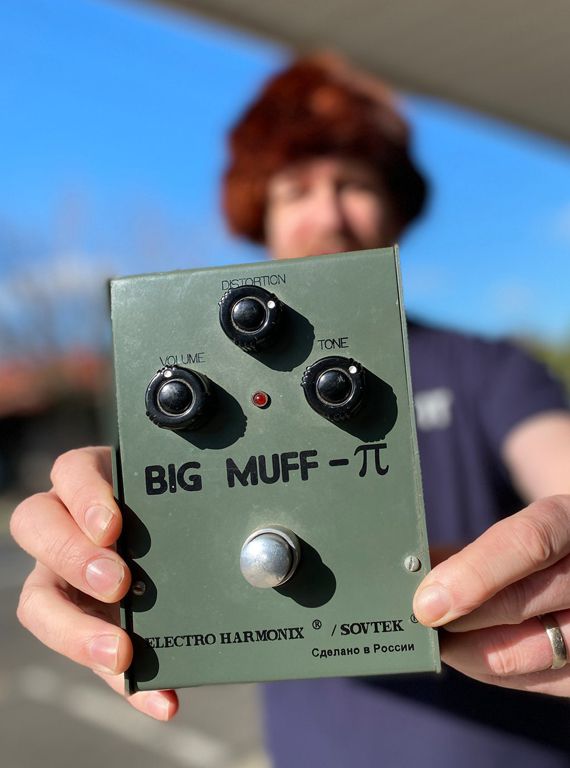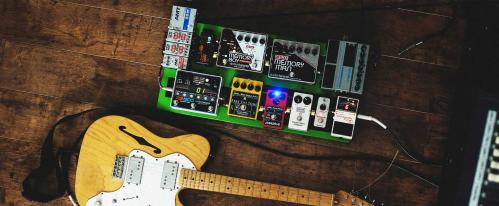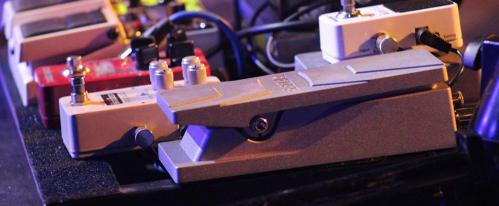THE ELECTRO HARMONIX BIG MUFF PI IS THE MOST POPULAR FUZZ PEDAL EVER, CELEBRATING 50 YEARS OF PRODUCTION.
A BRIEF HISTORY OF THE BIG MUFF
Today the Big Muff comes in many different shapes and sizes and this guide will help you to choose your perfect Big Muff fuzz pedal! It’s amazing to think that one of the most influential guitar pedals of all time is celebrating 50 years of production – it seems like they’ve been around since the dawn of time!
To help celebrate this milestone, we’re going to provide a complete guide to the Big Muff pedal so you can choose which one is right for you and pay respect to this amazing pedal’s legacy with a brief history.
It all started back in 1969, when Mike Matthews and his partner Bob Myer decided to create their own fuzz pedal on perfboard – little did they know they would create one of the most widely used and well-respected pedals ever produced.
A younger Matthews, a keyboard player and recent Cornell graduate, was working for Guild manufacturing the original Foxey Lady pedals back in the late 60s and decided to take inspiration from the design to create something more reliable, more controllable but altogether new.
Very quickly after Matthews and Myer produced the first Muff pedal, the music scene couldn’t get enough and the company haven’t looked back since.
WHAT'S THE FUSS ABOUT FUZZ GUITAR SOUND?
Fuzz pedals are one of the most quintessential pieces of guitar gear and the Electro Harmonix Big Muff reigns supreme after 50 years of production - however, it wasn't the first fuzz sound!
The Fuzz guitar sound was pioneered in the 1950s in one of the first rock'n'roll records, 'Rocket 88' by Ike Turner and his band. According to legend, the amp belonging to guitarist Willie Kizart fell off their car's trunk, and got damaged... giving it a new, "fuzzy" sound that, hey hey - was perfect for the new musical genre, and inspired the creation of the first fuzz pedal, one of the earliest types of guitar effect (alongside tremolo, reverb and tape delay.)
Before there were such things as Distortion or Overdrive pedals, fuzz pedals were all the rage, and used by everyone from The Beatles and Rolling Stones, to Jimi Hendrix and Led Zeppelin.
More than any other type of effects pedals, fuzz boxes have to be "played" - it's not just matter of stepping on them. A good fuzz pedal will react to the guitarist's picking, to its position in the signal chain, and to subtle variations on your guitar or amp settings. For this reason, fuzz pedals can be very personal, and opinions about any of them will vary wildly.
However, the Electro-Harmonix Big Muff pedal managed to rise above the others and is by far the most popular fuzz pedal in rock music, used by everyone from David Gilmour to John Frusciante, from Jack White to Mogwai.
WHAT IS THE BIG MUFF FUZZ PEDAL?
The Big Muff is a very simple, vintage-style fuzz pedal that marks an evolution from previous Electro-Harmonix fuzz pedals, delivering a distinctive distorted sound.
The first Electro-Harmonix "Muff" effect was the Muff Fuzz pedal, a tiny box (not a pedal!) with an on/off switch and a volume knob.
It was basically an LPB-1 booster with an added overdrive circuit. Simple & effective, this effect was reissued as the Nano Muff Fuzz Overdrive.
This effect interacts great with valve amps (as indeed do most fuzz pedals): roll back the guitar volume for mild, creamy overdrives, or have pedal & guitar full-on for vintage fuzz tones!
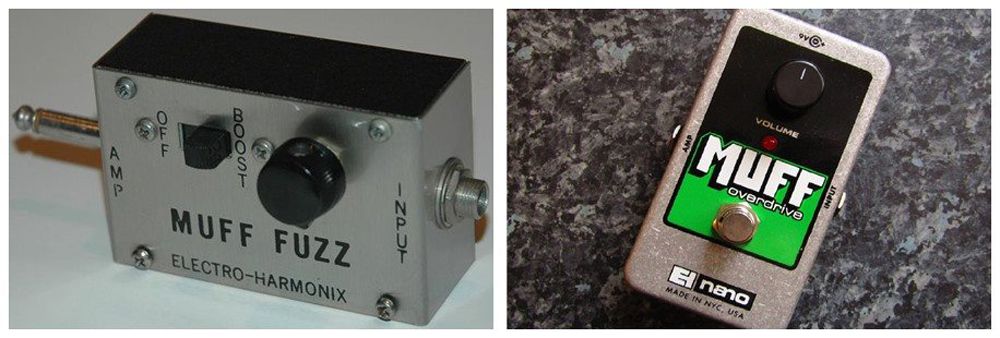
Other Electro-Harmonix effects that were direct ancestors to the Big Muff were their Axis Fuzz and the Foxey Lady, which Mike Matthews manufactured for another brand, Guild.
As the names of both pedals suggest, Jimi Hendrix's sound was a major inspiration for those pedals, and for their successor: the Big Muff! According to Electro-Harmonix founder Mike Matthews, Hendrix actually had a Big Muff and was impressed enough to use it on some sessions.
In production since 1969, the Big Muff was designed to add more bass-heavy sustain than any other fuzz pedal produced before, and also featured a tone control, which made it more versatile than all the other older fuzz boxes that came before, such as the Maestro FZ-1 (used by Keith Richards on 'Satisfaction'), Vox Tonebender (used by Jimmy Page) or the Fuzz Face (used by Hendrix).
Cheap and reliable, the Big Muff sold well throughout the Seventies, and early adopters included David Gilmour, Kiss, Carlos Santana and even John Lennon.
In the nineties, a new generation of bands helped to make the pedal even more popular, including Sonic Youth, Dinosaur Jr., Smashing Pumpkins and Mudhoney, who even name-checked it on their debut album, 'Superfuzz & Big Muff'.
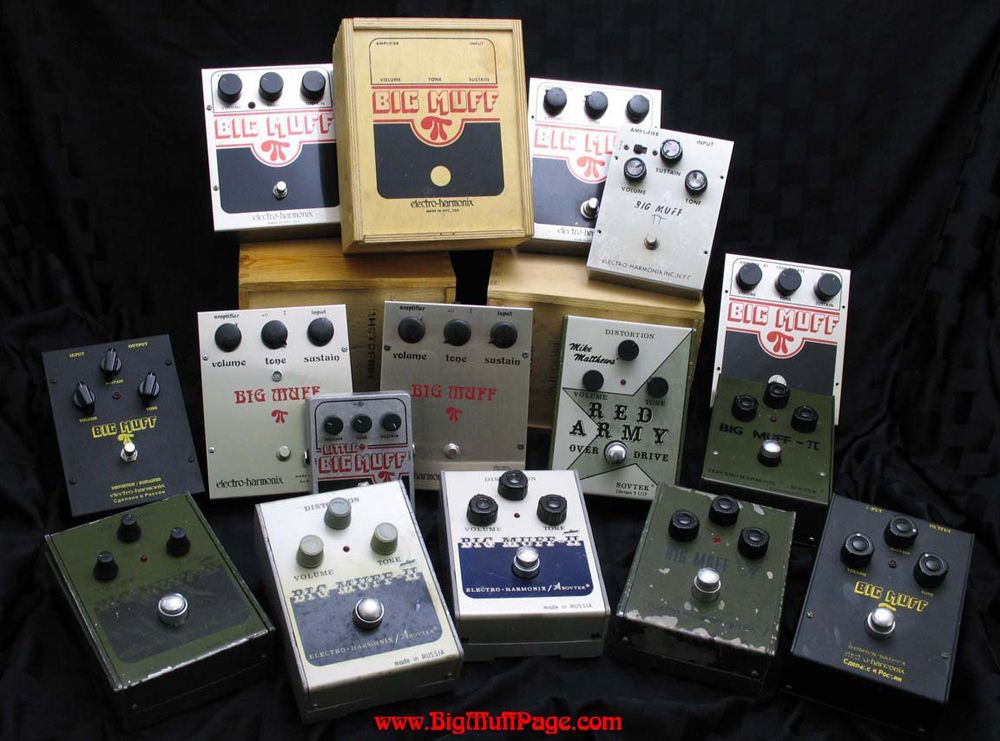
The Big Muff underwent several design changes until its final and most popular version, the Big Muff Pi NYC, as sold today.
Tone purists will argue endlessly about which version is the best, and about all the tonal differences between all the versions; but they all sound pretty much similar, and unmistakably "Big Muff-y".
There's no mistake when you listen to a Big Muff because it does have a very particular sound - though it's been copied by countless Big Muff clones!
THE RE-INTRODUCTION OF THE COVETED BIG MUFF OP-AMP
The Big Muff pedal has gone through a few select changes and improvements over the years, and although it hasn’t strayed too far from its original design and sound, there has been one particular version that tonehounds have desperately tried to get their hands on – the Op Amp version.
The late 70s version of this world-famous pedal relied on operational amplifiers (op-amps) rather than transistors back in the day to get that rich, saturated fuzz sound and utilised three gain stages rather than the four we have today.
This particular sound is what put the likes of Billy Corgan on the map with his band Smashing Pumpkins and is featured heavily throughout the album ‘Siamese Dream’. This version of the pedal now fetches a hefty sum on the 2nd hand market making it almost unaffordable for mere mortals.
So, to put a stop to that and to satisfy the tone nerds out there (like me) EHX reissued this coveted pedal in 2017. The Electro Harmonix Op-Amp Big Muff Pi 2017 Reissue recreates the classic tones of the 70s and faithfully recreates all the subtle nuances of this classic pedal whilst taking up far less room on your pedal board!
One of the key features here is the ability to remove the Tone control from the circuit without affecting the volume of the pedal, so you just get an entire wall of sound in all it’s glory. Best of all it’s Billy Corgan approved too!
NYC BIG MUFF VS. GREEN RUSSIAN 'SOVTEK' BIG MUFF PEDAL
The Russian Sovtek Big Muff (in military green, discontinued) is a particularly sought-after model, fetching a hefty price on the 2nd hand market! Compared to the NYC version, the Russian Big Muff is a bit "darker", bassier and with a bit less sustain.
We can't guarantee an original is any better than any other Big Muff, but it's pretty cool and collectible, nevertheless!
Dan Auerbach from the Black Keys is one of the many guitarists who prefer the Russian version (which has inspired the new Bass Big Muffs). The good news is Electro Harmonix has actually reissued the Green Russian Big Muff in the form of the Electro-Harmonix Green Russian Big Muff Distortion Sustainer Pedal.
This provides an identical sound to the original Sovtek version but offers a more pedalboard-friendly size. Here's a good video comparing the NYC Big Muff vs. the Russian Big Muff:
At a time when expensive boutique FX pedals are popular, and any boutique fuzz pedal can gain fetishistic status almost instantly, the affordable, mass-produced Big Muff still retains its "cool" factor. The reason is simple: it really is awesome - whatever version you choose!
SOUND DIFFERENCES BETWEEN DIFFERENT BIG MUFF PEDALS
If you want to know the sound differences between each of the Electro Harmonix Big Muff pedals, watch our sound comparison between each version below:
WHAT'S THE DIFFERENCE BETWEEN ALL THOSE BIG MUFF PEDAL MODELS? HERE'S TOP 6 THINGS YOU NEED TO KNOW ABOUT THE BIG MUFF...
Today, Electro-Harmonix manufactures several different versions of the Big Muff, from bigger to smaller versions, plus a few other "Muff"-named pedals that don't have much in common with the original Big Muff concept, such as the Metal Muff distortion pedals, awesome distortion fx pedals for the Heavy Metal guitarists.
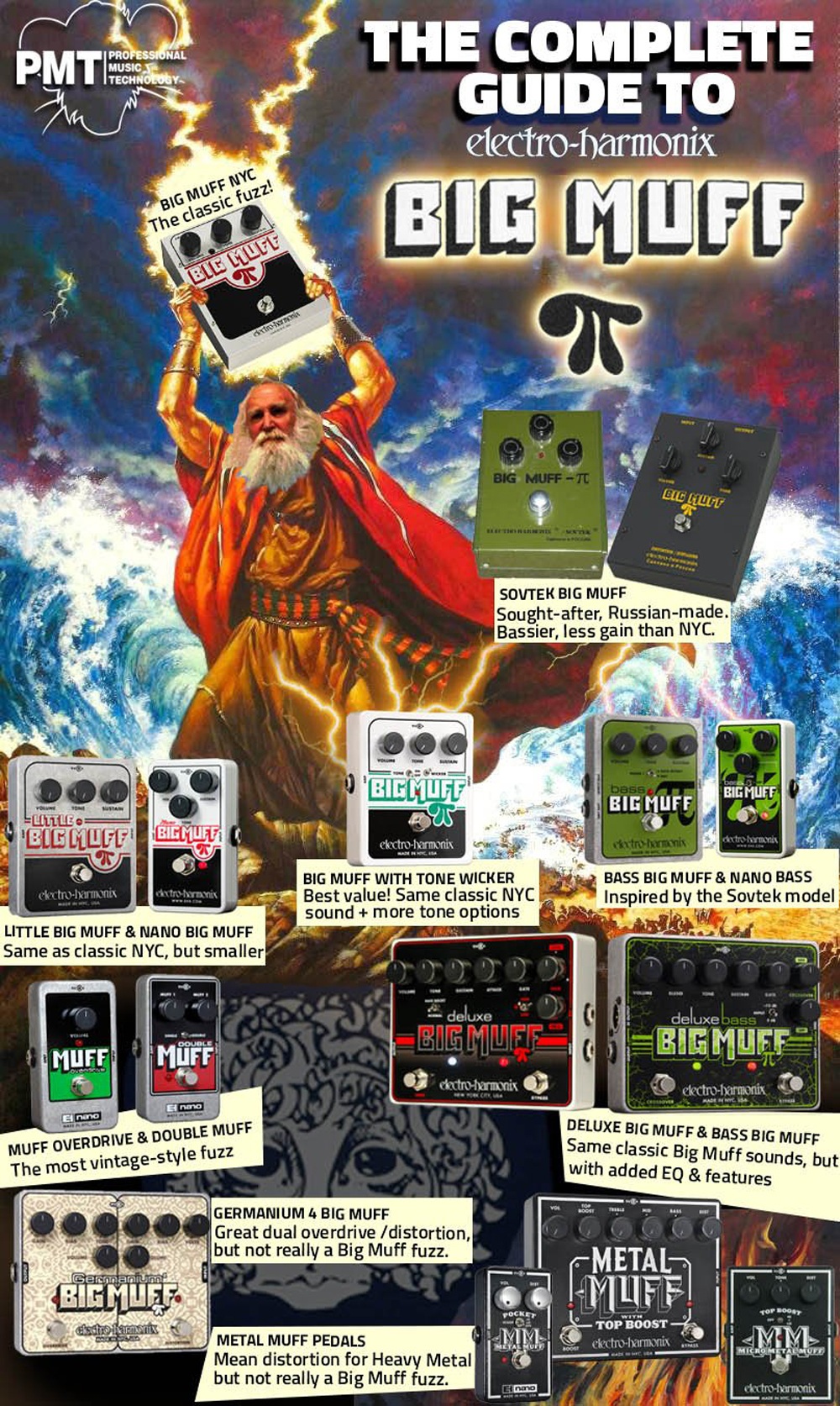
We'll keep the comparisons as short and sweet as possible, as long and very technical comparisons are available elsewhere. So here's our list of Top 6 Things Every Guitarist *Really* Need to Know About The Big Muff, to decide how to choose a Big Muff fuzz:
1) THE BIG MUFF PI, LITTLE BIG MUFF PI AND NANO BIG MUFF PI ARE ESSENTIALLY THE SAME
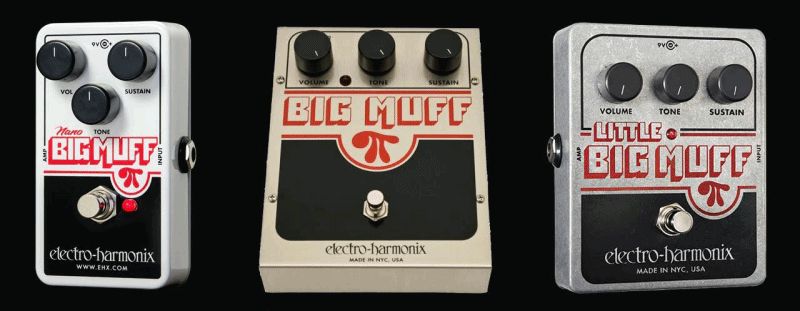
Whether you go for the Big Muff NYC, Little Big Muff, or Nano Big Muff, you'll get pretty much the same sounds. The smaller versions offer true bypass, but the main difference is simply the size, as the original Big Muff may be a bit too old-fashionably big for some pedalboards.
Sure, if you A/B the three pedals you may spot some subtle differences - but nothing that would really matter or be noticeable live or in the studio. The main reasons you'd choose one particular model over the other will be size, price, or looks.
2) THE BASS BIG MUFF AND NANO BASS BIG MUFF ARE REPLICAS OF THE GREEN SOVTEK BIG MUFF
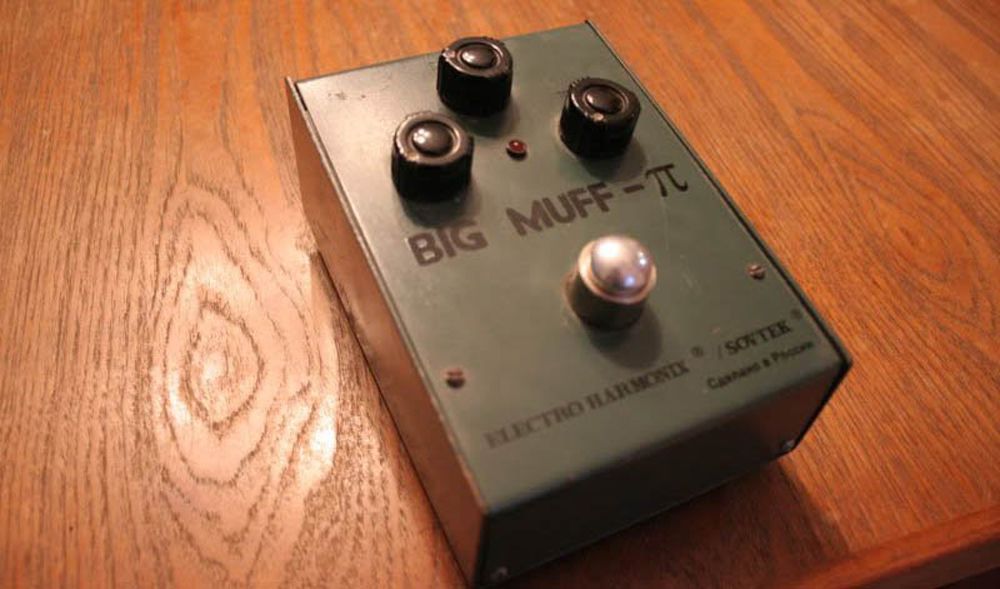
Despite having "Bass" on their name, both Bass Big Muff and the Nano Bass Big Muff pedals are great for electric guitars - and the best alternative to the rare, green Sovtek Big Muff!
They were modeled after the Sovtek version and thus have a very similar sound, with a bit less gain, fatter bottom end, and brighter mids than the NYC version.
Again, these differences are more noticeable when A/B-ing than in any "real" situation, but considerable enough to tip someone into choosing a "green" version over the other ones.
The biggest new features are the "dry /boost" switches on the Bass Big Muff pedals, perfect to enhance the sound of bass guitars, for which they were specially designed, after all!
3) THE DELUXE VERSIONS ARE GREAT FOR EXTRA VERSATILITY

One of the great things about fuzz pedals is that they're simple, so why complicate? The Deluxe Big Muff Pi and the Deluxe Bass Big Muff offer more than most guitarists need or want, therefore they are not as popular as other models.
Having said that, they are also great value for money, and offer really a lot of pedal for the price - those with a more adventurous spirit will love them! In fact - there are many who think these are the best Big Muffs!
Basically, they're ideal if you want to fill your setup with a more versatile pedal than a standard Big Muff.
Both pedals will give you the same classic Big Muff sound, but their extra EQ features (engaged on/off via their second foot-switches) add an extra dimension, for instance as a booster for solos or as an extra, different fuzz sound.
4) THE BIG MUFF PI WITH TONE WICKER IS THE "BEST VALUE" MUFF
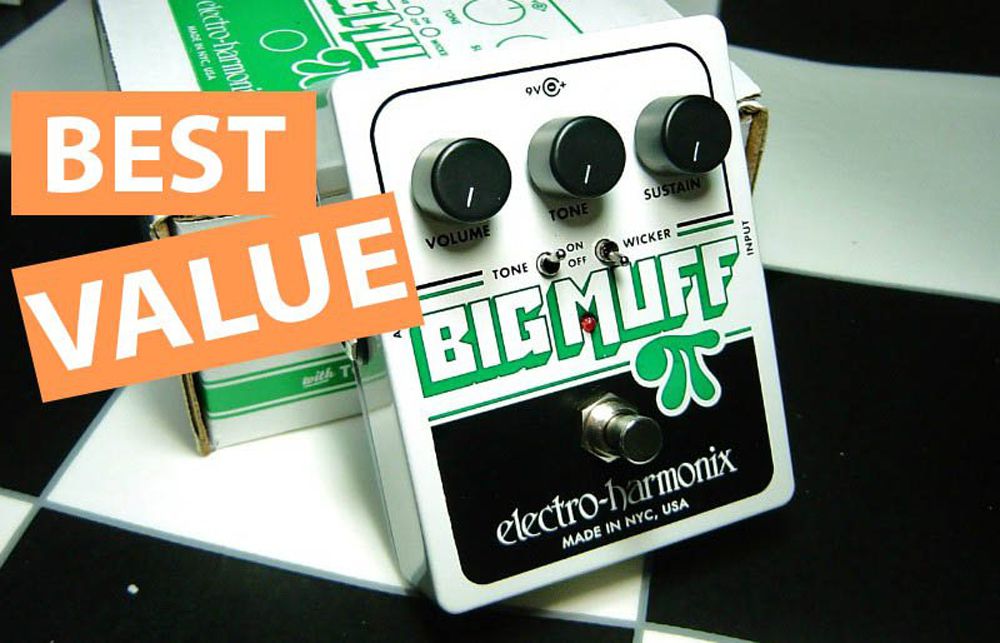
For the money, you simply can't beat that little, white Big Muff with Tone Wicker! It sounds exactly like a classic Big Muff Pi, but also features two extra switches for added tonal goodness:
- The 'Wicker' switch boosts the high frequencies, making it sound a bit brighter and more "modern".
- The Tone on/off switch can disengage the tone knob, basically turning your Big Muff into a more vintage-style, two-knob fuzz. The wicker switch works in either setting.
Without going full-on on extra features, like the Deluxe versions, the Tone Wicker version manages to offer quite a few extra different sounds but still remains a very straight-forward pedal. Perfect if you think the original Big Muff is too big and fancy a few more tonal options, just in case!
5) THE DOUBLE MUFF & MUFF OVERDRIVE ARE THE MOST "VINTAGE" SOUNDING
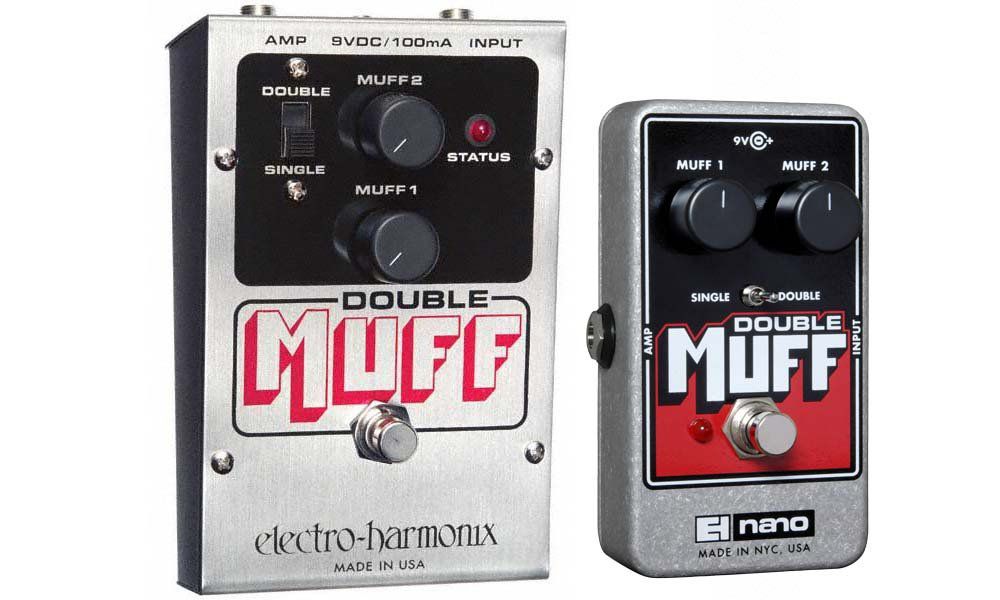
Like the Germanium 4 Big Muff (see below) these pedals are not truly "Big Muffs", but they are great for vintage, fuzz tones. After all, the Muff Overdrive is a reissue of the original Muff Fuzz, and the Double Muff is, well, like two Muff Overdrives in one, for extra dirt!
6) THE GERMANIUM 4 BIG MUFF IS THE LEAST "BIG MUFF" OF THEM ALL... BUT ONE OF THE BEST!
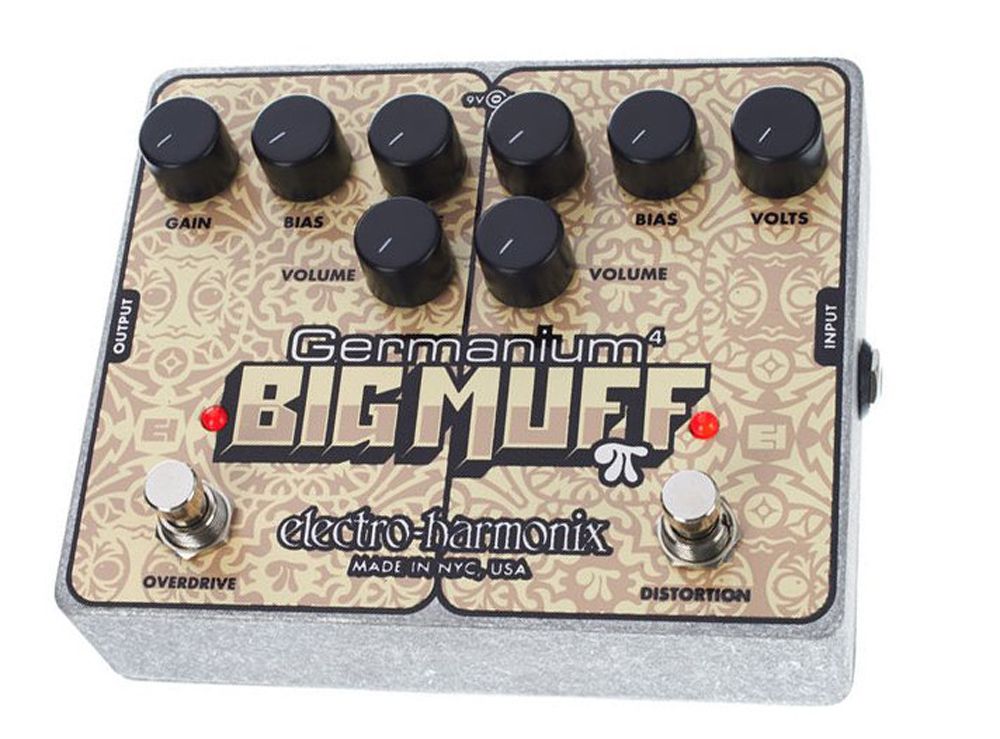
Why was this pedal called a "Big Muff"? Maybe this explains why this Germanium 4 Big Muff is not as popular as it should be - it's one of the best distortion pedals Electro-Harmonix has ever made but sounds nothing like a Big Muff!
In fact, this pedal is not even a fuzz at all: this is a warm, dirty pedal divided into two sections: overdrive and distortion. If features a pair of NOS NTK275 germanium transistors on each section, for a truly vintage distortion sound.
Whether you play blues, indie or even metal, this is a fantastic pedal at a superb price, well worth the investment - much better than the Visual Sound Jekyll & Hyde used by The Strokes, perhaps its most obvious competitor.
The Germanium 4 Big Muff is not really recommended if you're looking for a genuine Big Muff fuzz sound, but it's a fantastic choice if you're looking for a 2-in-1 distortion pedal with booster/overdrive.
Mark our words - one day this pedal will be very collectible!
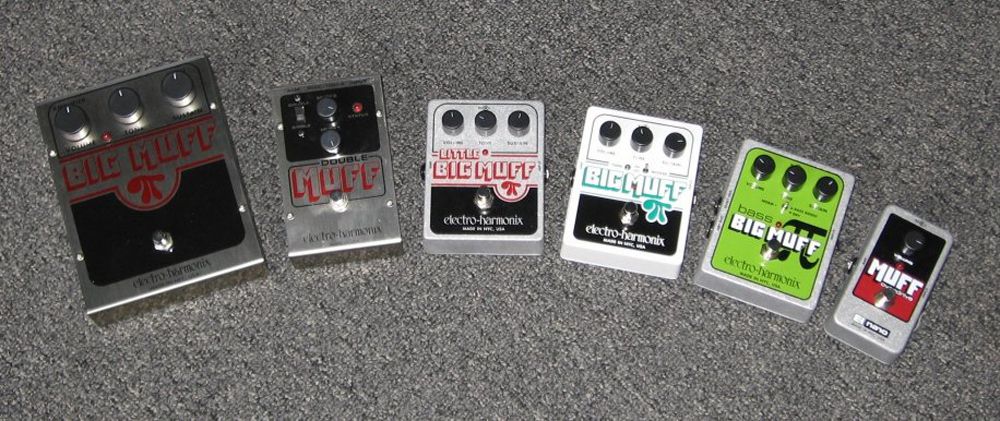
If you still haven't made up your mind, why don't you visit your local PMT Store? Try out a few different Electro-Harmonix Big Muffs at one of our stores: Birmingham, Bristol, Manchester, Leeds, Cambridge, Cardiff, Romford, Northampton, Norwich, Newcastle, Portsmouth, Oxford, London or Southend!
Updated: 2020-06-18

